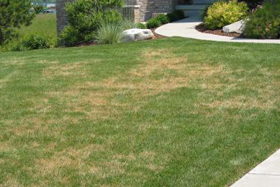Drought stress is a common concern for lawn owners, leading to patches of brown grass as a result of insufficient water. This condition can manifest rapidly, with sizable areas or even tire tracks from lawn mowers appearing almost overnight. The primary cause is the dehydration of the lawn, often followed by a subsequent period of inadequate irrigation or rainfall.
Drought stress in plants can persist even if you diligently water your lawn every day. Factors such as sudden weather changes, especially during hot weather, can disrupt the irrigation system, causing the grass to suffer. Lawns with sandy soil or those adjacent to concrete or asphalt are particularly susceptible to this issue.
If you find your lawn facing such a predicament, there’s no need to despair. The grass plants are not dead; they simply require time to regrow new blades. To address drought stress lawn, consider the following steps:
• Turn up the water.
• Adjust sprinkler heads if needed. The grass plant will recover and your lawn will be back to new within 2-3 weeks.
• Also, if you have mower tracks in your lawn, make sure to avoid mowing on your lawn if the grass looked dull and gray.
• Another way to check is to step on your lawn. If the grass plants don’t pop back up and you make a footprint, your lawn needs more water.

Mower Tracks caused by Drought Stress
Additionally, be cautious if there are mower tracks in your lawn. Refrain from mowing if the grass appears dull and gray. A simple test involves stepping on your lawn. If the grass doesn’t spring back up, leaving a footprint, it’s an indication that your lawn requires more water to overcome drought stress.
Remember, addressing drought stress in plants promptly and consistently following these measures will contribute to the overall health and appearance of your lawn.

